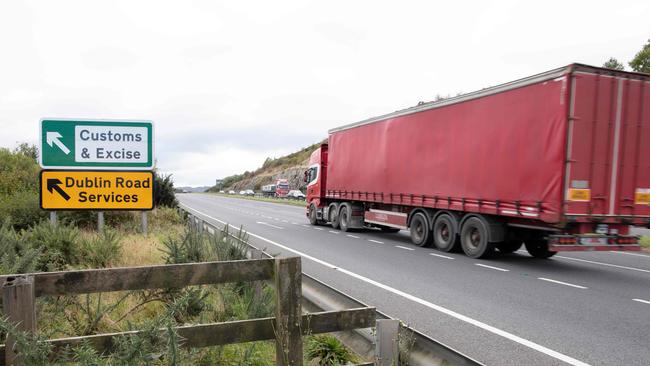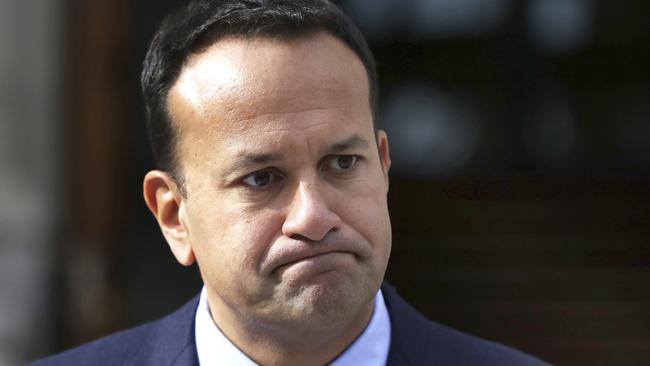Explainer: How will Boris Johnson’s Brexit plan work?
Boris Johnson’s plan to get a Brexit deal over the line is a mix of concessions, red lines and fudge.

Boris Johnson’s plan to replace the Irish backstop and get a Brexit deal with the European Union over the line is a mix of concessions, red lines and fudge. The legal text runs over 44 pages and 21 articles.
What is it and will it work?
What is the plan?

At its most basic, the plan will keep Northern Ireland in the EU single market for all goods while following UK customs rules.
Northern Ireland would comply with existing EU single-market rules and regulations for all goods, and adopt all new rules agreed upon by Brussels, for the next four years.
This means that there will be regulatory checks - particularly, but not limited to, food and agricultural goods - at ports on the Irish Sea, where they will be turned back if they don’t comply with EU single-market rules.
Key concern: This would require an entirely new declaration system to be created, as the current system relies on the Union Customs Code. This is a big concern for the EU, which does not believe it is enforceable.
What about border checks in Ireland?

The government is insisting that Northern Ireland must leave the EU’s customs union, a key demand of the Democratic Unionist Party. However, Mr Johnson insists that this will not lead to checks at the border itself and any checks could be carried out at business premises in Northern Ireland and the Republic.
Under plans raised verbally by Britain on September 12, non-agri-food goods would be declared and cleared in “customs clearance sites” ten miles behind the border on either side.
The UK is also proposing that small traders, who make up the bulk of trade by volume in Ireland, be exempt from the system altogether.
Key concerns: The EU is concerned the system would be open to abuse and an increase in paramilitary smuggling.
Asking the EU to accept a customs border is also seen in Dublin and Brussels as tearing up commitments to avoid trade friction between Ulster and the Republic of Ireland after Brexit.
It is the most important barrier for the EU but some member states may be willing to look at the proposal seriously as a compromise alternative to no-deal.
Does it matter what Ireland thinks?

This is one of the vaguer parts of the government’s proposals and now the most controversial element for the EU. It states that the Northern Ireland assembly and executive must give their consent to the plan before the end of the transition period, and then every four years afterwards. If the assembly votes against the deal in 2020, government sources said that there would be a year of unwinding; meaning an extension to the transition, possibly keeping the entire UK in the EU’s customs union until the end of 2021.
Key concerns: The way Northern Ireland institutions are structured, any decision has to have the majority support of both nationalist and unionist parties. This could give the DUP an effective veto on the plan later; something that Dublin is unlikely to countenance. However, Downing Street is understood not to have ruled out the prospect of an Irish referendum. One other problem is that, while the Northern Ireland assembly would be given the power to leave the alignment zone, it would not be given the right to opt in to the EU’s customs union, as many nationalists and most businesses would like to do.
How will this affect Ireland’s economy?
The UK government is proposing what it calls a “new deal for Northern Ireland” to support the province’s economic development and cross-border trade - in effect, a cash injection from Whitehall to help the deal go down. Government sources say the UK is willing to provide significant funds both to Belfast and Dublin to make the new arrangements work and to get the deal over the line.
Key concerns: The sheer complexity of what is being planned means it would be almost impossible to get all the details agreed upon by October 31, and some of the proposals would have to be fleshed out afterwards. This will also be of significant concern to the EU side.
The Commons rejected May’s deals. Will this one fail too?
Surprisingly, perhaps, it looks as if this deal will get through the Commons. Arlene Foster, leader of the DUP, endorsed Mr Johnson’s deal as “sensible and balanced”. The 21 Tory rebels have also signalled their support, so with them, the DUP and Labour rebels behind him, Boris Johnson can expect to get his deal passed.
What does the EU say?

EU leaders aren’t crazy about it. The plan moves a long way toward addressing EU concerns over the integrity of the single market but asks Brussels to take an unprecedented risk over customs checks. EU leaders have been cool about the deal but haven’t dismissed it out of hand. and Claude Juncker, EC president said that among “positive advances” there were “problematic points”, including how the arrangements would be policed.
Leo Varadkar, the Irish prime minister, said that Mr Johnson’s proposals did not “fully meet the agreed objectives” of the original guarantee against a hard border on the island of Ireland but did not reject them entirely.
The Times



To join the conversation, please log in. Don't have an account? Register
Join the conversation, you are commenting as Logout